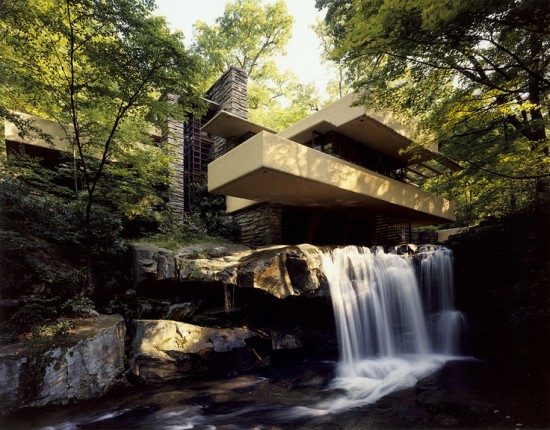
Guest post by Katie Babick, Senior Editor of Scholastic Art Magazine
 Although I am not an architect, I love to look at the buildings around me – and living in New York City, there are plenty to look at! Architecture is as much about the time and place it was built as the people who use it every day. Architecture can be about order like the classical buildings of Rome, about utility like the cold, sleek buildings of the Bauhaus, about fitting carefully into the landscape like Frank Lloyd Wright’s organic Fallingwater, or countless other styles.
Although I am not an architect, I love to look at the buildings around me – and living in New York City, there are plenty to look at! Architecture is as much about the time and place it was built as the people who use it every day. Architecture can be about order like the classical buildings of Rome, about utility like the cold, sleek buildings of the Bauhaus, about fitting carefully into the landscape like Frank Lloyd Wright’s organic Fallingwater, or countless other styles.
How to Begin
Unlike drawing or painting, architecture can be a daunting medium. It seems like you need a lot more than a pencil or paintbrush to create a building that is interesting to look at and structurally sound. Luckily, you can begin to learn about architecture just by looking around you. The best way to develop your own style as an architect is to look at the buildings you see around you, then build on what you like (pun intended!).
What to Look For
When you look at a building, pay attention to the relationship between what it is used for and its physical structure. For example, a skyscraper full of offices usually has lots of windows so that the people working inside, high up in the air, get lots of natural light. A theater, on the other hand, has very few windows so it stays dark inside during the day. Notice how spaces within a building are designed based on how they will be used. A classroom is usually a large open space, while libraries can be a lot like mazes, with multiple levels and lots of interior walls to hold bookshelves.
This all might seem obvious when pointed out, but these are things that a good architect thinks about before beginning a new design. What will it be used for? Who will use the space? Do they need a large, open room or lots of small ones? Do they need natural light or artificial light?
Additional Resources
If you would like to look at photos and read more about architecture, I recommend visiting Architectural Digest, which has lots of images of interiors and exteriors to inspire you and brief articles with more information. If you’re in New York City, there’s Archtober — a festival of architecture activities, programs, and exhibitions in the city during the month of October. Finally, The American Institute of Architecture has information about educational opportunities for those interested in studying architecture formally.
***
Submit your architectural creation to the 2013 Scholastic Art & Writing Awards!
Architecture submissions can include building designs, landscape designs, interior designs and urban plans. These include 2D work such as sketches, drawings, details, and computer-aided designs, blueprints, floor plans, or 3D work such as scale models made from foam core, balsa wood, cardboard, wooden blocks, polystyrene, found or reused objects, etc. Plans may be hand-drawn or computer generated. Models must be sturdy and able to endure shipping and exhibition. Architecture submissions can include up to 4 uploaded images. Learn how to submit your work here.
